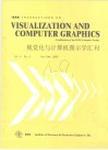版权所有:内蒙古大学图书馆 技术提供:维普资讯• 智图
内蒙古自治区呼和浩特市赛罕区大学西街235号 邮编: 010021

作者机构:Jinan Univ Guangdong Inst Smart Educ Coll Cyber Secur Informat Sci & Technol Guangzhou 510632 Peoples R China La Trobe Univ Dept Comp Sci & Informat Technol Melbourne 3086 Australia
出 版 物:《IEEE TRANSACTIONS ON VISUALIZATION AND COMPUTER GRAPHICS》 (IEEE Trans Visual Comput Graphics)
年 卷 期:2023年第29卷第8期
页 面:3670-3684页
核心收录:
学科分类:0808[工学-电气工程] 08[工学] 0835[工学-软件工程]
基 金:National Natural Science Foundation of China Guangdong Province [2021A1515012629] Guangzhou Applied and Basic Applied Foundation
主 题:Transfer functions Torso Task analysis Knee Velocity control Navigation Legged locomotion Human-centered computing human computer interaction (HCI) interaction paradigms virtualreality
摘 要:Body-centric locomotion allows users to control both movement speed and direction with body parts (e.g., head tilt, arm swing or torso lean) to navigate in virtual reality (VR). However, there is little research to systematically investigate the effects of body parts for speed and direction control on virtual locomotion by taking in account different transfer functions(L: linear function, P: power function, and CL: piecewise function with constant and linear function). Therefore, we conducted an experiment to evaluate the combinational effects of the three factors (body parts for direction control, body parts for speed control, and transfer functions) on virtual locomotion. Results showed that (1) the head outperformed the torso for movement direction control in task completion time and environmental collisions;(2) Arm-based speed control led to shorter traveled distances than both head and knee. Head-based speed control had fewer environmental collisions than knee;(3) Body-centric locomotion with CL function was faster but less accurate than both L and P functions. Task time significantly decreased from P, L to CL functions, while traveled distance and overshoot significantly increased from P, L to CL functions. L function was rated with the highest score of USE-S, -pragmatic and -hedonic;(4) Transfer function had a significant main effect on motion sickness: the participants felt more headache and nausea when performing locomotion with CL function. Our results provide implications for body-centric locomotion design in VR applications.